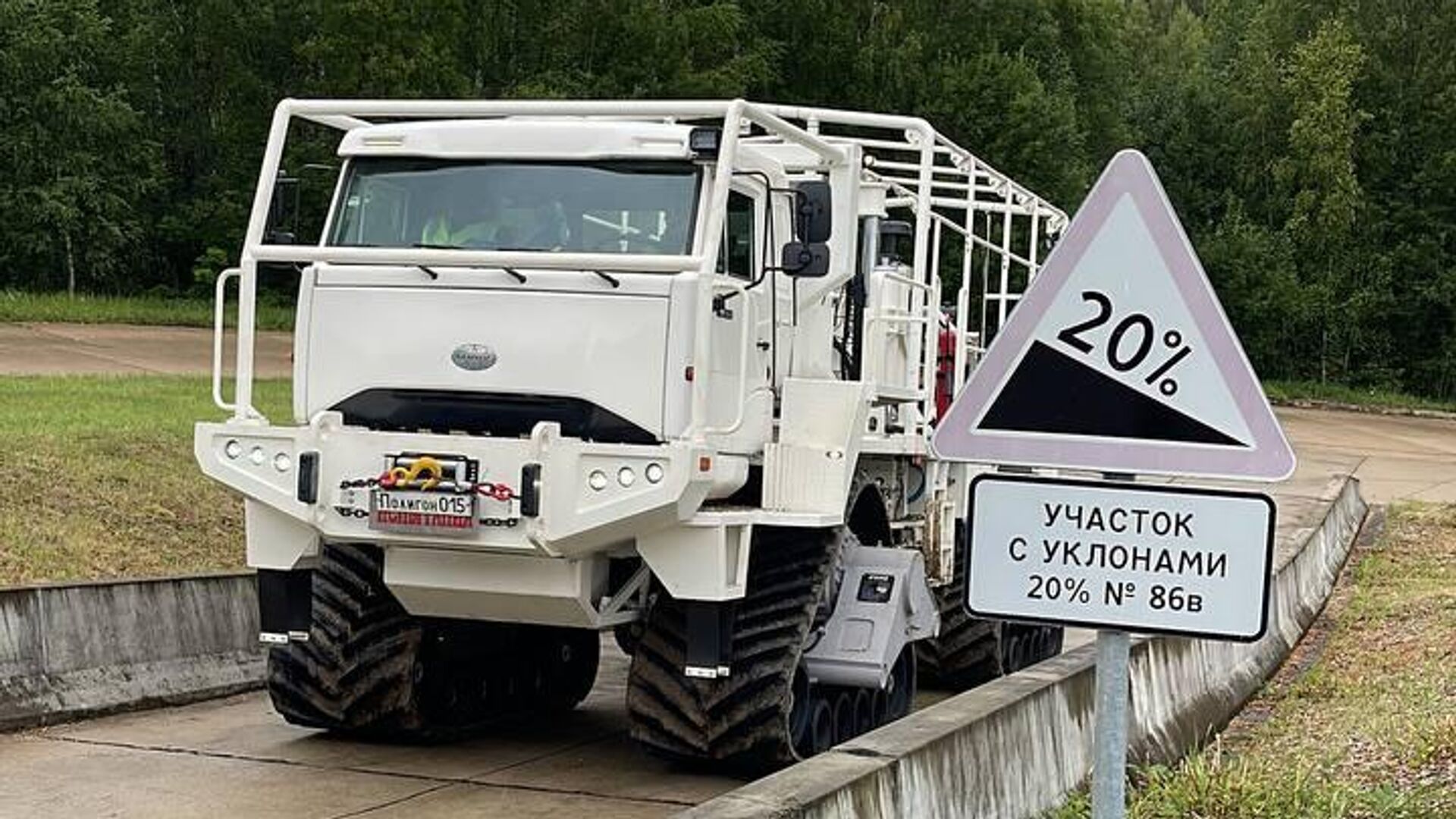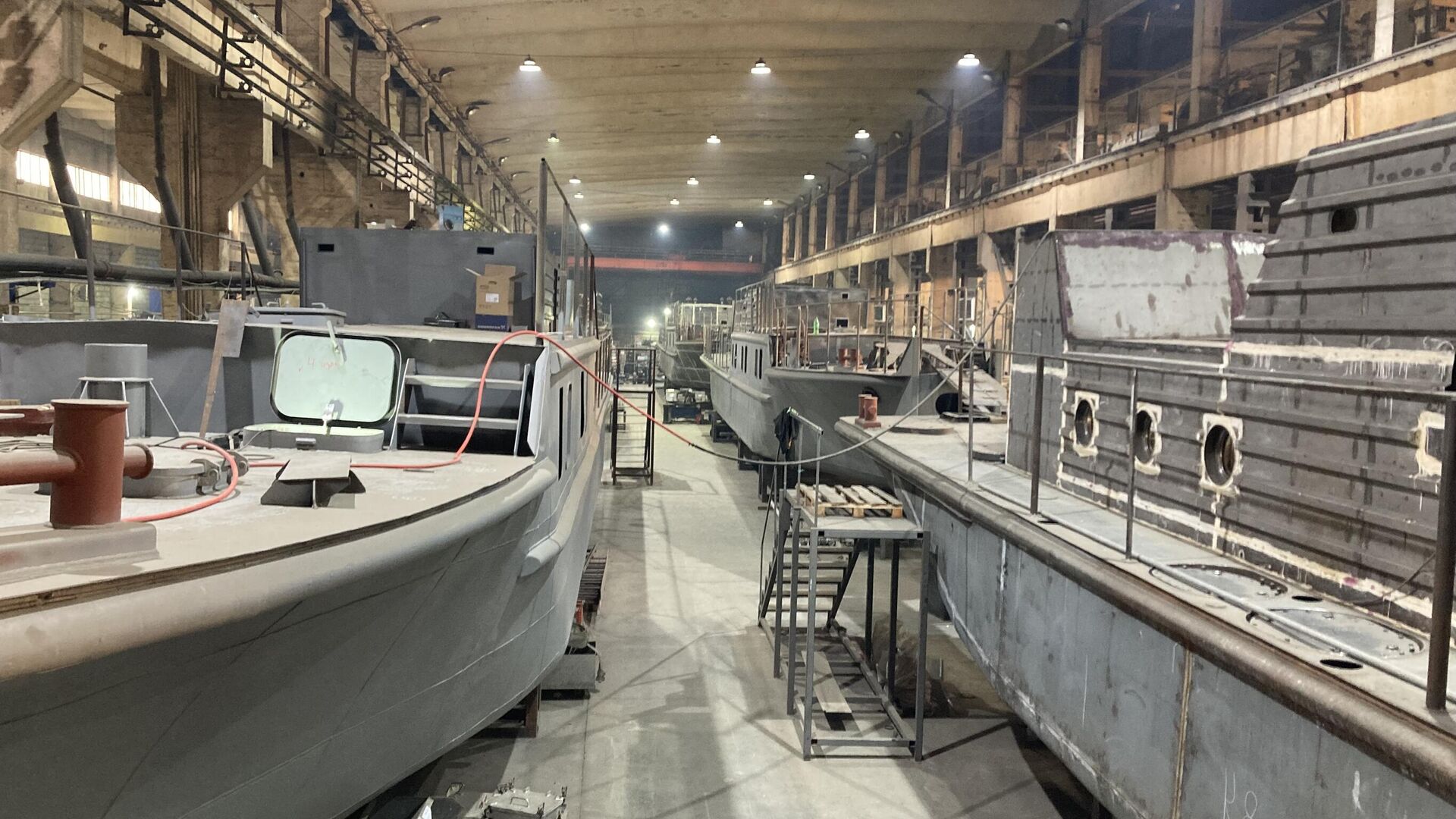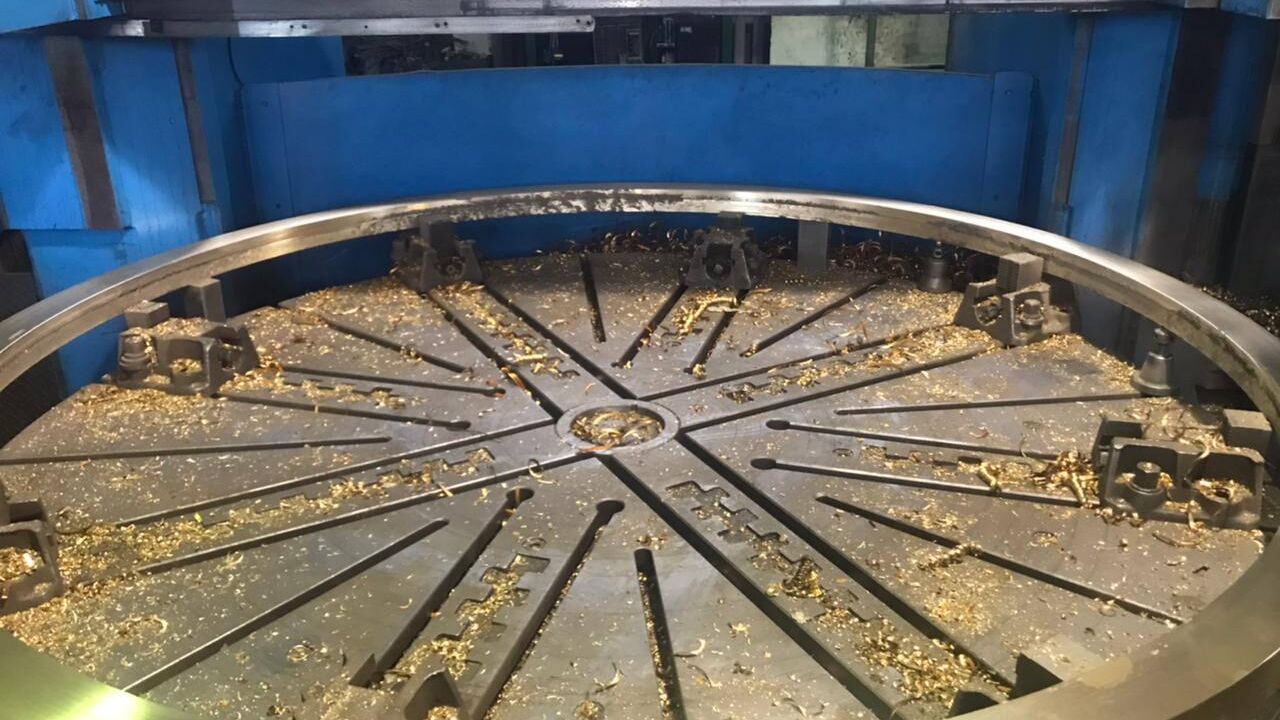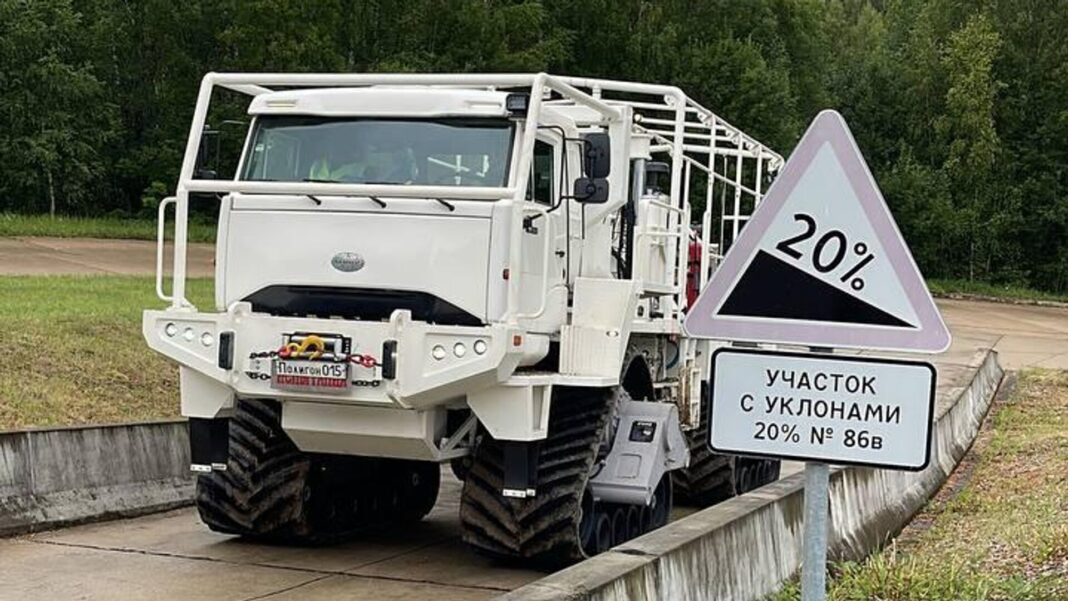
MOSCOW, August 1The military-industrial holding KMZ (Kingisepp Machine-Building Plant), together with the Kamaz plant and the Scientific Research Automotive Institute (NAMI), completed the first joint tests in Russia as part of the import substitution of tracked modules used on vibration sources for geological exploration, said KMZ Managing Director Mikhail Danilenko.
He explained that the vibration source sends a strong vibration signal into the ground, which, due to reflection, makes it possible to analyze the nature of the deposit and its depth. Previously, these modules were supplied to Russia and around the world by the French company SERCEL. These were the NOMAD65 and NOMAD65NEO cars. 
«We have achieved maximum values for travel speed in conditions of a significant slope of the surface; our product coped with a slope of 20%. Such indicators guarantee high cross-country ability and the ability of a vehicle equipped with our track modules to reach the most inaccessible places,» said Danilenko.
According to him, a set of four track modules installed on the first Russian digital vibration source SV-30-M3 passed a test route consisting of a series of slopes, mountain roads, where soil and concrete surfaces predominated. Heavy rain complicated the tests, worsening the adhesion of the rubber track with the road surface.
«The products of the French company underwent complete reengineering within the walls of KMZ. The enterprise developed design documentation, prepared technological processes for manufacturing directly at domestic industrial facilities,» said Danilenko.
According to him, there are currently a sufficient number of such machines in operation in Russia, their regular use requires timely replacement of modules, ongoing maintenance, thus, two sales markets are formed in the form of support for the operation of French machines, spare parts for which have largely ceased to be brought to Russia.
«The second niche is the creation of completely domestic machines based on the Kamaz, the adaptation of the basic chassis for the creation of vibration sources for deep geological exploration,» Danilenko noted.
This project is being carried out within the framework of the RF Government Resolution No. 208, where KMZ became the recipient of a grant in the amount of 96 million rubles for the development of design and technological documentation with the assignment of lit O1. The company had to manufacture a prototype and present it at bench, resource and proving ground tests as part of the Ministry of Industry and Trade's Technological Sovereignty program.


